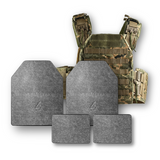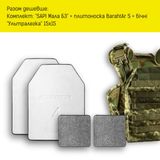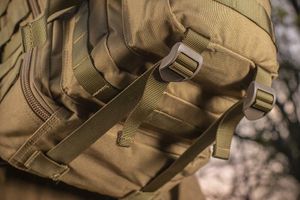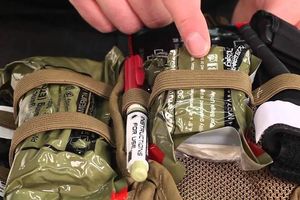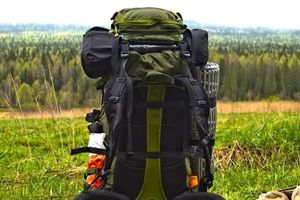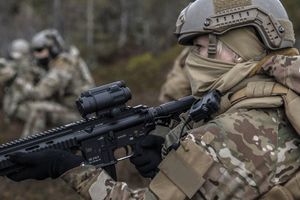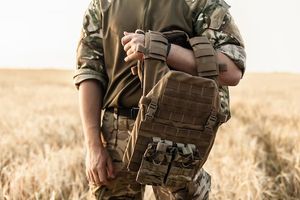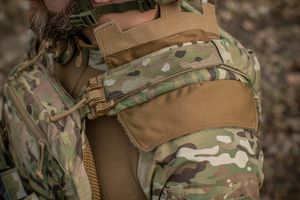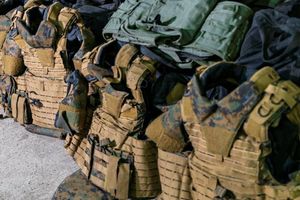Protection of life is the main purpose of body armor and other military clothing. There are many varieties of armor, helmets, tactical equipment. For most things, protection classes are defined - the maximum level of threat that armor can handle. But this is not the only criterion that you should pay attention to when choosing. Protective equipment does not interfere with combat missions.
This article will help you better understand the characteristics of body armor, ballistic helmets and other protective clothing.
What armor is made of
Armor is a common name for a range of products. Armor can be called a bulletproof vest, a plate carrier with plates, a helmet. This protective clothing significantly increases the chance of saving a life, but does not give one hundred percent guarantees, so caution is a necessary companion of quality clothing.
Body armor
The term "bulletproof vest" usually refers to soft armour: flexible layers of tightly woven materials that can catch a bullet if it's large enough and moving fairly slowly. Such vests consist of the following materials:
- Strong fabric similar to nylon. Cordura is popular.
- Layers of protective material are sewn inside. It can be para-aramid or ultra-high molecular weight polyethylene (UHMWPE).

Materials based on paraamides are Kevlar, Twaron, Chirocron. Their main advantages:
- the fiber is very strong to break - about 3620 MPa, relative density - 1.44, but it is vulnerable to edged weapons;
- Paraamides withstand very low temperatures (-196 °C).
But at high temperatures, the strength of the material quickly decreases. It is also vulnerable to water. To restore the protective properties, it must be completely dried, and this can take up to 10 days.
UHMWPE (polyethylene) is a lightweight material. Having the same protective properties as para-aramids, it is 20-30% lighter. The material is also sensitive to water, although it does not lose its properties as quickly. If moisture gets between the layers of material, the bullet can cause water hammer, which will cause the vest to rupture. UHMWPE starts to melt at +120 °C, therefore it is afraid of fire.
Soft armor is more commonly used in undercover situations, among law enforcement and bodyguards. Most often, it belongs to classes 1, 2 and 3 GOST.
In addition to the layer of protective materials, the body armor may have pockets for installing plates, as in plate carriers.
Plate carriers
A plate carrier is a piece of tactical equipment that, when paired with ballistic plates, functions as body armor. Plate carriers are often used by the military and police.
Plate carriers are used only in combination with armor plates and have slots for attaching ceramic, composite or steel plates. Plate carriers are often used as synonyms for the word “body armor”. They are available in different styles and sizes to accommodate different hazards and conditions. Military models are equipped with sections for placing cartridges, first aid kits and other things.

To provide protection, you will need a front and back plate, you can also use side plates.
Armored plates for plate carrier
The plate is the main protective element in the plate carrier. They are made from different materials:
- Armox 500/600T steel is used for DSTU class 3 slabs.
- UHMWPE is also suitable for class 3 slabs. The material is light, so the vest does not interfere with movement, and you can wear it for a long time without getting tired.
- Ceramic is a durable material for Grade 4, Grade 5 and Grade 6 slabs that stop large caliber bullets. On the inside there is a damper to extinguish the energy of the bullet.
Several different materials can be used for ceramic plates:
- aluminum oxide or corundum;
- lighter silicon carbide;
- Boron carbide is a material that is about 10% lighter than silicon carbide.
The latter option is more common in American-made products.

There are two large types of slabs by way of use:
- STA (Stand Alone) - plates that can be used as an independent protective element in a plate carrier.
- ICW (in conjunction with) - armor plates used only in combination with other protective elements, such as fabric materials. The protection class of such plates is determined just in the full set of protective elements.
Rigid slab is a disposable product. When hit by a bullet, it loses its protective properties, it must be replaced.
Safety helmets
Ballistic helmets protect against shrapnel and pistol balls. Like soft armor, they are made from para-aramids, ultra-high molecular weight polyethylene and impact-resistant plastic. The helmet is sold without a cover, but may be damaged by moisture or fire. That is why it is recommended to purchase or sew a protective cover. It can be double-sided with different colors to better camouflage at different times of the day.
Equip protection classes
Protection classes were introduced to better understand what threats a particular product eliminates. There are many classifications in the world, but when it comes to body armor and plates, the most popular is the classification of the US National Institute of Justice (NIJ-0101.06). Ukraine uses DSTU 8788:2018 standards.
To determine which class a particular product belongs to, tests are carried out. The main parameters that affect the result:
- bullet caliber;
- bullet material and core;
- shot distance and bullet speed;
- angle of impact.
- Forbidding deformation - the degree of bending of the armor to the inside.
Only after passing the tests, the protective element is assigned a class, because the life of the one who wears it depends on it.
Debris resistance classes
To determine debris resistance, armor is also rated V50. The standard was originally created for bulletproof helmets, but today it is used for all items of clothing: body armor, riot control equipment and ballistic plates.
Different FSPs (fragments) are used to measure the V50 value, where the most normal size is 1.1 g. This fragment is fired at different speeds to measure the resistance of the material to fragmentation. The speed when the armor stops 50% of fragments, and will be the value of the V50 class.
The most common standards for testing shatter resistance are:
- US standard - STD 662 E;
- UK standard - UK/SC/5449;
- NATO standard - STANAG 2920.
To better protect against debris, an apron, a protective groin plate can be added to the vest.
Armor protection classes
For body armor, plates and helmets, the DSTU and NIJ classifications are used. Plate carriers are not classified because this element alone cannot protect against bullets or debris.
The military needs a reliable vest class 4 or higher according to DSTU and III NIJ. Such armor can withstand submachine gun and rifle shots while maintaining a relatively low weight of up to 4 kg. Heavier armor hinders movement and causes rapid fatigue.
If you choose a NIJ Class III vest or plates, it will not stop AP flammable bullets like DSTU Class 5 and 6 armor. They are capable of withstanding 7.62x39mm FMJ bullets. DSTU class 4 armor is tested with 5.45 x 39 mm 7N10 cartridges from AK-74. There is no guarantee that III NIJ will withstand such bullets, because they have a strong steel core. Also, vests of the 4th class DSTU are tested with bullets of 7.62 x 54 mm 57-N-323s from the SVD rifle, they also have a steel core, stronger than 7.62 × 39 mm FMJ.
NIJ recommends choosing Tier IV armor for protection against 5.56mm and .223 FMJ.
Ballistic helmets are class III NIJ - this is the maximum level. Airsoft and other gaming helmets cannot be used for real combat operations.
Booking expiry date
Armor plates and helmets are disposable items. Once a bullet hits them, they cannot be reused. Protective properties will be violated. If these are ceramic materials, they will crumble from damage.
Overall life depends on materials. Steel does not lose its properties up to 15 years, and ceramics - only 5-7.
A plate carrier is a more durable product, but it can also lose durability if hit by a bullet. A hole in the fabric will cause the material to tear further.
Required certificates
When buying vests, be sure to require a certificate of protection class, which contains the following information:
- Combat test results. There is data on calibers and bullets, weapons, shot distance, photo of the result.
- The name of the manufacturer to which the certificate was issued.It must match the brand of the vest or other product.
- Name of the institution that issued the certificate.
- Seal of the institution and signature of the responsible person.
The ideal option is when the document contains all this data, but, unfortunately, this is not always the case. If there is a certificate of assignment of a protection class and a sheet with the results of a test shooting, this is also good.
Weight of body armor
Weight depends on many factors that can be listed for a long time. Instead, here are approximate values for different equipment:
- soft body armor - 3 kg;
- ceramic stove class 4-6 - 2.5-4.6 kg;
- plate carriers without plates - 1-1.5 kg;
- Helmet - 1.5-2 kg.
Weight determines how long you can wear the vest.
Which protection to choose?
When choosing equipment, consider your own wishes and the threats you face.
Body armor or plate carrier?
The choice depends on the tasks you face and the risks to your life. If we are talking about the protection of objects, work at checkpoints, then it is better to choose a body armor that can be reinforced with hard plates. This option better protects against debris during shelling.
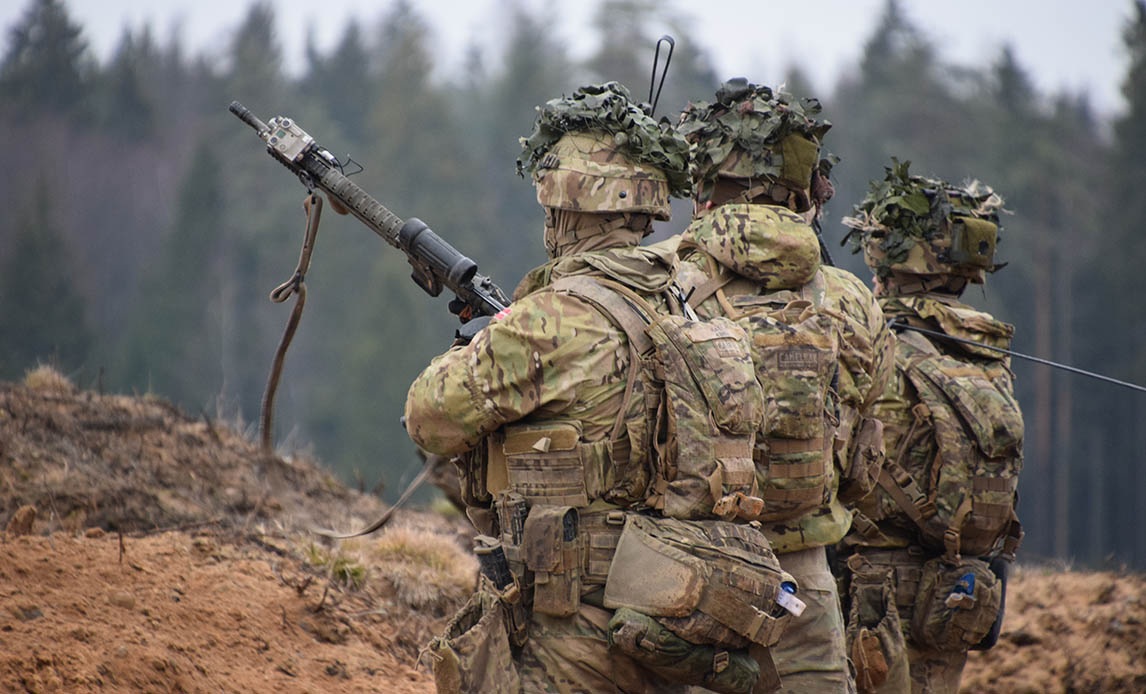
To perform combat and other tasks that require mobility, it is better to choose a quality plate carrier.
Ceramic or metal plate?
Each material has advantages and disadvantages. Advantages of steel plates:
- Metal doesn't need to be cared for as carefully as ceramics. Steel can take a hit without degrading the armor too quickly.
- The cheapest material.
There are also disadvantages:
- Because steel is hard and tough, the energy of a high-velocity bullet can break ribs, sternum, and even damage lungs.
- Does not adhere well to the body, so the plate is uncomfortable.
- Metal is the heaviest of all armor materials.
- Armour-piercing bullets are specially designed to penetrate steel armor.
- If there is a side impact, the bullet may bounce off the steel and ricochet into exposed parts of the body.
Ceramic also has its pros and cons:
- Lighter steel material.
- Ceramic absorbs and dissipates energy better than steel. This will result in fewer broken ribs.
- Ceramic is better at fighting supersonic armor-piercing bullets than steel.
- You can add Kevlar to reduce bullet force. This provides better protection for the ceramic plates.
The main disadvantages of ceramics:
- Ceramic plates are often thicker and reduce movement.
- Cannot withstand multiple shots in the same area. After hitting a ceramic plate, it usually breaks. Steel is better at stopping multiple bullets.
- Ceramic hobs are much more expensive than steel hobs.
- Ceramic hobs require more care and maintenance than steel hobs. Ceramics will last about 5-7 years versus 15-20 for steel.
In general, ceramic is a more modern and lighter type of slab.
Why no protection is better than poor quality
If you choose a vest in the wrong class or just a poor quality product, it can cause more harm. The bullet can ricochet off the steel plate, so an additional anti-debris coating is required.
High weight is also a problem. If you decide to play it safe and choose heavy armor, it can lead to rapid fatigue. A vest weighing 8-9 kg creates a serious load. Add to this the weight of weapons and supplies, and the figure becomes even higher.
Poor-quality vests and plates do not have a damper on the inside. When hit by a bullet, the plate is deformed and can cause injury. The presence of a damper does not completely eliminate the risk, but significantly reduces it.
When choosing a body armor, plates or helmet, choose the appropriate class. It works both ways: too low a grade will not protect against large caliber bullets, and too high a grade will add extra weight and create unnecessary stress.
In Patriot Arsenal you will find reliable ceramic plates, plate carriers of various sizes and ammunition for convenient use.
Author of the review Ulyana Radostina









